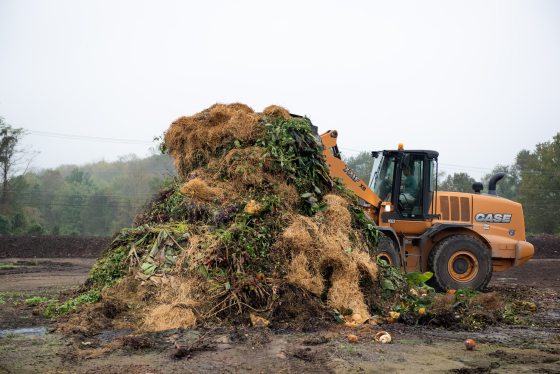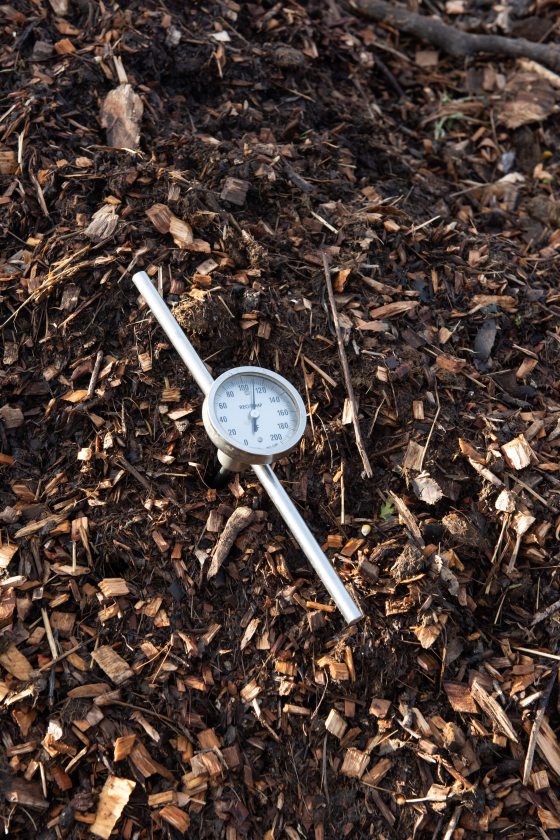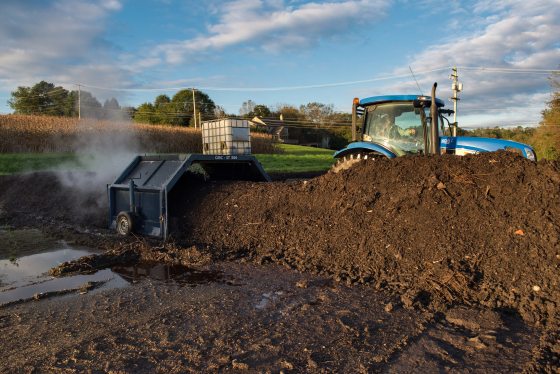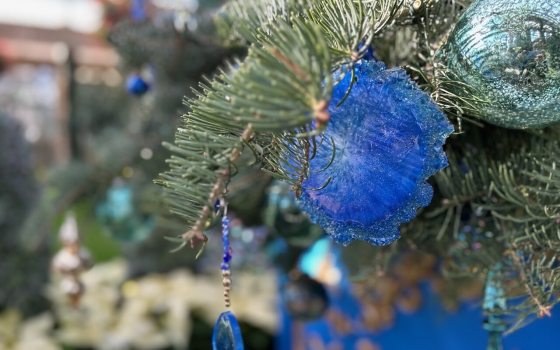It’s no secret that our Gardens are a place of beauty—but one of the secrets behind that beauty may surprise you. The health and longevity of our soil, and all that goes into our soil, is one such secret. Thanks to the work of our Soils and Composting team, using thermophilic composting, our waste plant material is turned into nutrient-rich soil, which then helps grow subsequent plant material. This cyclical process is not only one rooted in sustainability, but also one that helps ensure our plants grow in optimal conditions—and for the first time, we’re making our all-purpose compost available for your use.
Whether compost is being used in our Gardens or in your garden, its benefits are numerous. Using compost adds nutrients essential for plant growth, helps loosen compacted soils and clump together loose soils, balances pH, and helps plants be less vulnerable to pests and diseases. We started composting in 1956 and our facilities, teams, and processes advanced as the program grew. Today we produce our compost at our Soils and Composting facility, which resides on our Abbondi property, an adjacent piece of land that we purchased in 1969. We’ve made many improvements throughout the years to the facilities at Abbondi as we have enhanced and expanded our programs. This also included the addition of a dedicated team in the mid-90s to collect, produce, and distribute finished products.
Today, we collect herbaceous and woody plant material across the Gardens and then blend the material with horse manure from local stables in specific ratios to begin the composting process. From start to finish, the composting process takes approximately four months, but it’s an intense process guided by regular turning and nutrient analysis.

As part of our sustainability initiatives, much of our garden waste and dry debris is repurposed into compost. It takes about four months for the process. Photo by Hank Davis.
“Grass clippings are nitrogen-rich, adding vital nutrients back into our compost,” shares Longwood Soils and Compost Manager Erik Stefferud. “We’re giving a second life to the plants used throughout our Gardens by composting spent bulbs shipped in from the Netherlands, poinsettias from A Longwood Christmas, and so much more.”
At Abbondi, you’ll find Stefferud and his team tending to compost in various stages. “As much as the beauty of our Gardens inspire our guests, there’s another story waiting to be told about the impact of composting on our Gardens,” shares Stefferud. “The behind-the-scenes work of our soils and composting team is science in action.”
How do we make our compost? To start, compost needs four main ingredients—dry, carbon-rich “brown” materials; wet, nitrogen-rich “green” materials; air; and water. Though we have an abundance of fresh and dried plant materials, we also supplement with horse manure collected from local stables. The nitrogen-rich manure helps to heat up the compost pile to create ideal conditions for materials to breakdown.

A byproduct of the microbial breakdown of our compost pile is heat. Regularly checking the temperature helps us to gauge when the pile needs to be turned and how far along it is in the decomposition process. Photo by Hank Davis.
Our first step in making compost is to make a windrow or a compost heap with our brown and green input materials. We monitor these piles for appropriate temperature ranges (generally between 90 degrees and 150 degrees F) to ensure the microbes are breaking down the materials appropriately. If at any time the temperatures begin to fall below our thresholds, we turn the compost to add oxygen back to the pile and reinvigorate the microbes so they can continue breaking the material down into nutrients. Temperatures about 160 degrees F could kill off the beneficial microbes, so we also turn the pile when it gets too hot to release the heat. Once our green garden materials have decomposed and our compost pile is no longer heating up after mixing, it’s time for it to cure for at least four weeks. During this time, the compost pile shrinks to about one-third of its original size. Our finished composed looks dark, feels loose, and smells like fresh soil. It is also screened to reduce its particle size in order to improve soil incorporation.

Oxygen is needed to support the compost process. Though many home composters may use a pitchfork to turn their compost piles, Longwood uses a tractor-pulled compost turner. Photo by Hank Davis.
Each year, we divert more than 10,000 cubic yards of garden waste from local landfills while also producing 5,000 cubic yards of finished mulch, compost, and screened topsoil. About 600 cubic yards of that is compost, which is used across the Gardens and grounds and—for the first time—is now also available for purchase at The Garden Shop.
Holding the Seal of Testing Assurance certification through the US Compost Council, our compost is a sustainable mixture of input materials from our Gardens and local resources. We test our compost frequently, following state and national regulations for compost manufacturing, and we’re transparent about our process and product.
Intended for multiple uses, including containers, houseplants, garden beds, trees, shrubs, and turf, our all-purpose compost blend can be purchased at The Garden Shop or online for in-store pickup. Just think—this compost is the same compost we use at Longwood and is made from materials from our Gardens—meaning it’s a truly unique way to bring the beauty of Longwood to your home.


